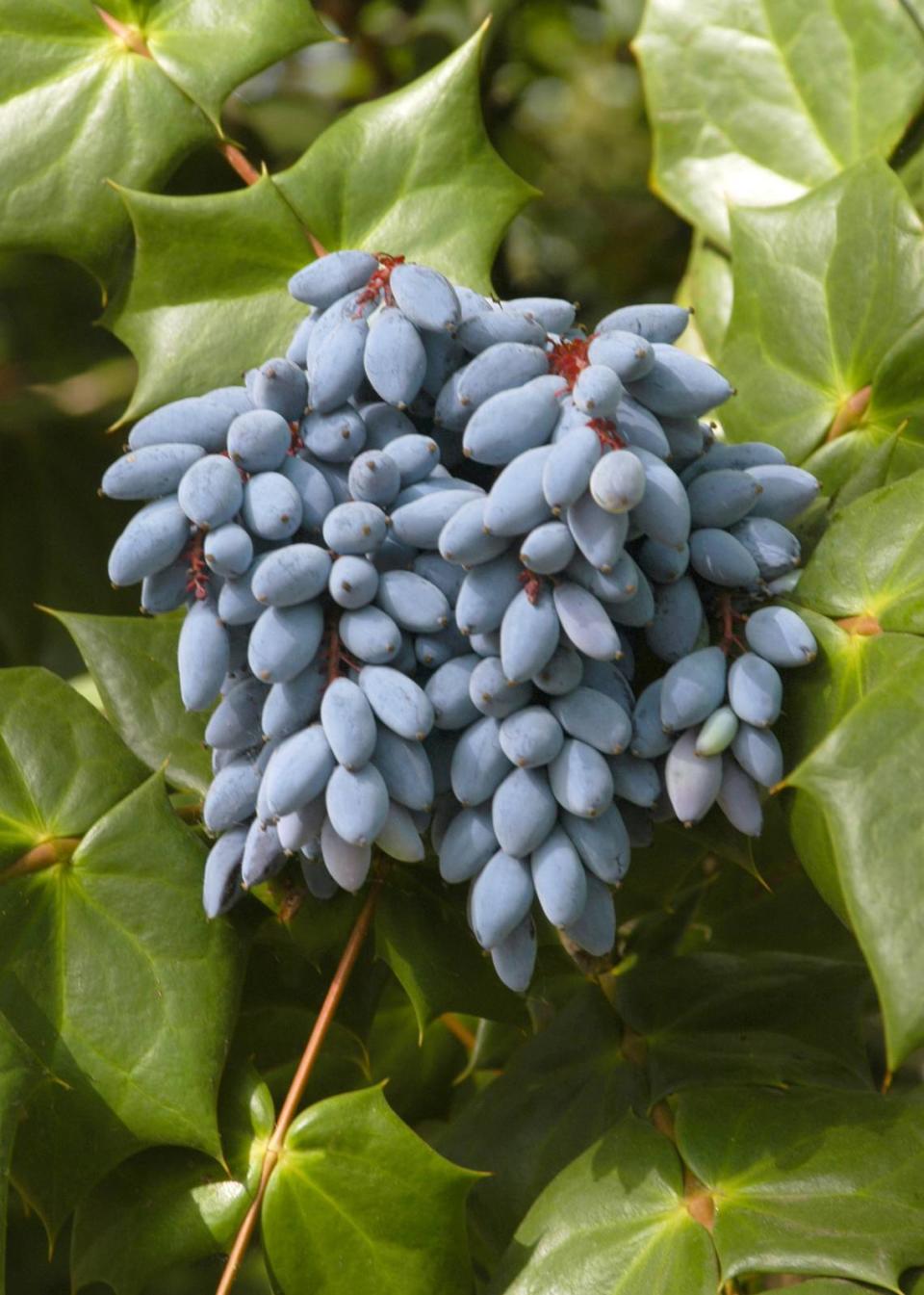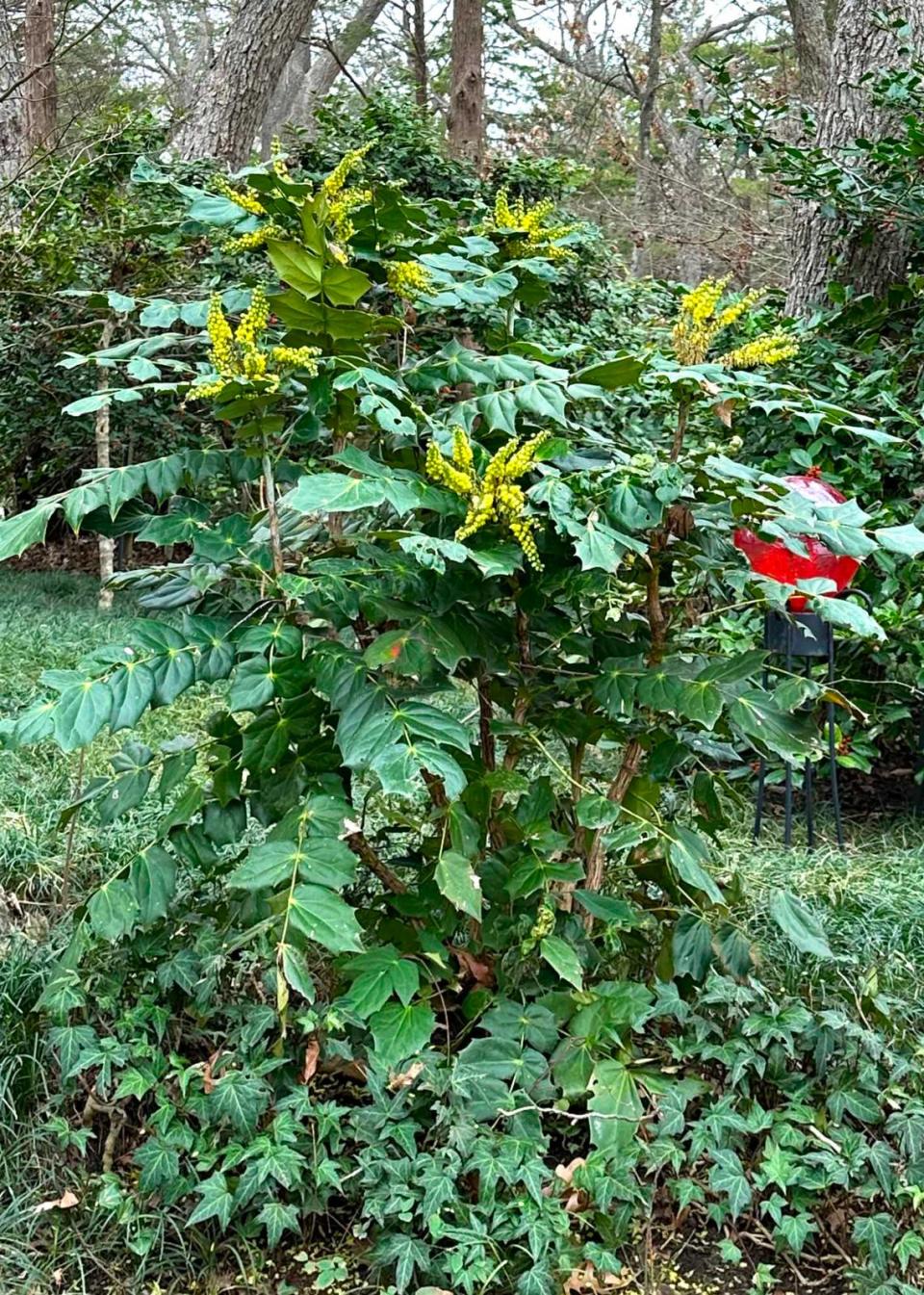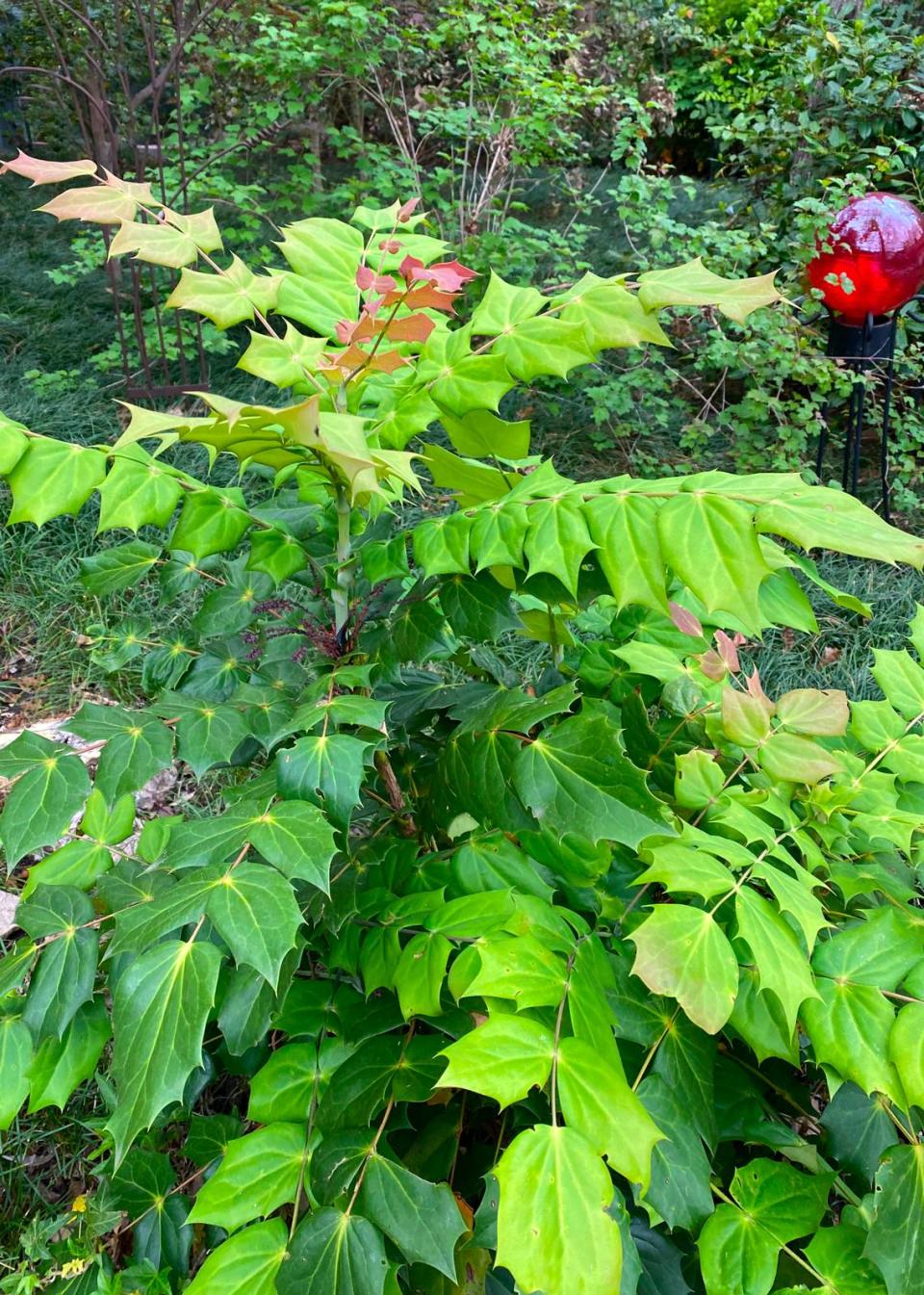This tough and overlooked plant might be what you need in your North Texas landscape
I’m going to tell you about a shrub you may never have considered for your own landscape. You may never have seen it in anyone else’s landscape. If you had, you might have cast it aside without giving it as much as a chance. You would have been making a bad mistake.
Leatherleaf mahonia. That name alone ought to tell you that this plant is a tough one. Tough enough to stand up to Texas. I’ve been growing it for 40 years and I’ve never seen anything bother it. Oh, hot and reflective sun isn’t its friend, but then again, we have plenty of other plants that can thrive in those conditions. This one grows beautifully in shade. That’s a harder position to fill, so we’re lucky to have it.
Botanically it’s Mahonia bealei. It was discovered in China by Scottish botanist Robert Fortune 200 years ago. He left it in the garden of a Mr. Beale of Shanghai awaiting transport to Europe. It was subsequently named for Beale and eventually made its way to American gardens. It became widely dispersed along the East Coast and through southeastern gardens until it is now reasonably common in finer landscapes all across the South. So why isn’t it in yours?
One of the reasons you don’t see leatherleaf mahonias more commonly in residential landscapes is that it’s incredibly prickly. People can’t picture themselves living alongside it. Another is sticker shock. It’s slow growing, so the nursery plants cost more than comparably sized plants of other species. And, it must have shade from late morning on or it will struggle and fade. Many of us don’t have shade when our gardens are young. Those are, in some people’s eyes, significant reasons not to buy it.

But what are its good points?
So now for my sales pitch. First, this plant is glorious. Its leaves are blue-green and stunning. Forget that they are prickly — you’re not going to go out and stroke them on a regular basis. You just make provision by planting it off the beaten path where people won’t bang into it in their garden finery. Plant it near the back of the woody plant border, perhaps behind Carissa or dwarf yaupon hollies that can provide dark evergreen foliage as a nice contrast.
Leatherleafs grow four to six feet tall and three to four feet wide. That means they’re fairly upright, much like a standard nandina. And, that’s reasonable because, after all, the plants are closely related. Both are in the important Barberry family of shrubs. Mahonias, like nandinas, have very few side branches. They grow single stem, producing their dramatic leaves like proud plumage.
Their flowers are produced in late winter. They’re vivid yellow, showing up like bright beacons when little else is colorful in the cold garden. They’re borne at the ends of the stems, and they’re favorites of bees when temperatures warm up enough to allow them to fly.
The flowers are followed very quickly by large clusters of berries that look like gorgeous sprays of decorative grapes. They may start out green, but they quickly turn to blue-gray, then steel blue. Gardeners and songbirds absolutely love them. They’re ripening right now in the Sperry gardens, and if you look around you in town, you’ll probably see them in your neighborhood, too. But don’t blink, because if you tarry the birds will feed on them and they’ll suddenly disappear. I took my photos this week before the fruit reached full maturity because I feared if I waited, I’d have nothing to show you.
Best ways to use leatherleaf mahonias
This is not an ordinary shrub. It’s not one you plant and start shearing into ovals or boxes. It’s a shrub that needs to be allowed to grow free-form to five or six feet tall. If a cane grows too tall, you use lopping shears to cut it back near the ground. That’s what you’d do with a nandina — these similarities never end. That will encourage it to send up new shoots from its base, and they will keep it low and compact. Without that type of pruning the plant will tend to grow lanky and leggy.
I have found it best to use leatherleafs in groupings and clusters. One lone plant usually looks rather awkward. The plant usually does best when it’s planted in natural clusters three to four feet apart from other leatherleafs, then allowed to grow together.

Plant them in early morning sun with shade from mid-morning on. You’ll want highly organic planting soil that you can keep consistently moist. Feed it with a high-nitrogen lawn-type fertilizer every six to eight weeks during the growing season. Pruning should be done immediately after the fruit has been harvested by birds or fallen from the plants in the spring.
This is a great weekend to plant leatherleaf mahonias. Here’s hoping my sales pitch has been successful. If your favorite nursery doesn’t have it in stock, they can order it in for you. Others will also be asking for it. Give it a try. You won’t be disappointed.


